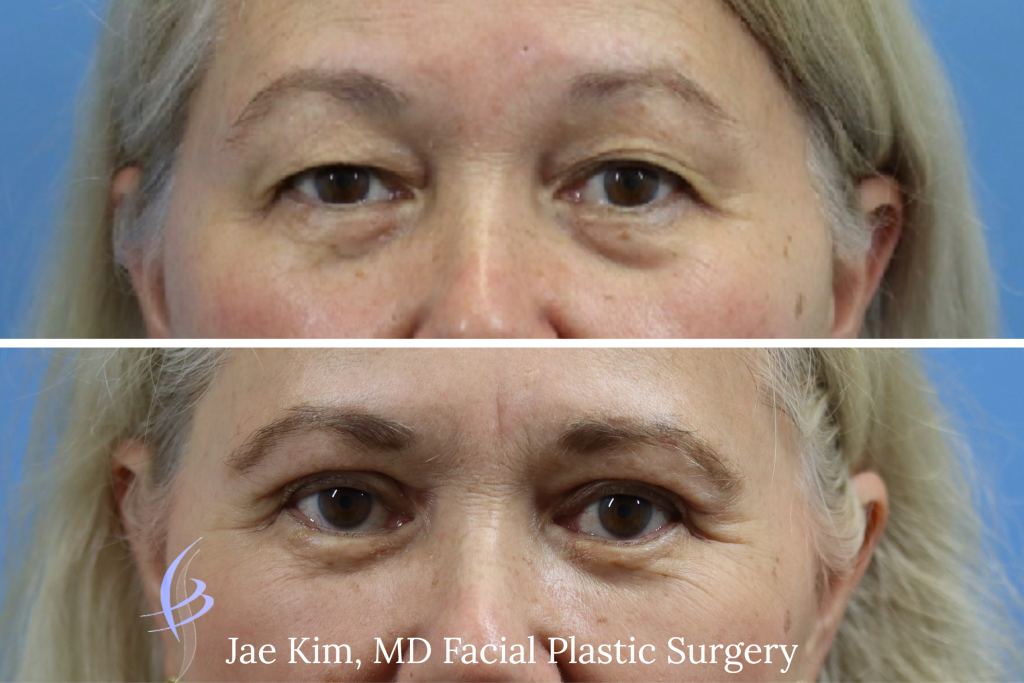What Is Upper Blepharoplasty?

The eyes are the accessories of your face, and the eyelids are the platforms that feature your eyes and allow them to express yourself to the world. Changes to the eyelids that occur over time, however, may be displeasing to you. Common concerns about the upper eyelids are excess skin or hooding of the eyelids.
Upper Blepharoplasty is a procedure to remove fat and/or excess skin and muscle from the upper eyelids. This procedure is the most popular surgery in our office and double-board-certified facial plastic surgeon, Dr. Jae Kim artistically helps you rejuvenate your eyelids so that your eyelids can become a stunning platform for the eyes to shine through.
Where Will the Surgery Be Performed?
Upper Blepharoplasty is an outpatient procedure that may be performed in a surgeon’s office-based facility, an outpatient surgery center, or a hospital. Dr. Jae Kim can perform this surgery in the office under local anesthesia. Oral medications may be given prior to the surgery for more comfort.
Will I have a Visible Scar?
For upper blepharoplasty, incisions are made on the thin upper eyelid skin. They are carefully placed and sutured so that the resulting scar heals very well and is virtually imperceptible. The eyelid skin is the thinnest skin on the body and heals with minimal scarring.
What Happens After Surgery?
Once the procedure is over, patients return home to start their recovery process. You will need to arrange for a ride home in advance from a friend or family member. Please note that you may not use any rideshares or taxis while being medicated.
You may notice some swelling and bruising above and under the eyes. Any sutures are removed about one week after surgery. We encourage patients to walk around the house after surgery for better blood flow and patients can return to normal physical activity two weeks after.
What Is the Cost of Upper Blepharoplasty?
The price of Upper Blepharoplasty is determined by a number of factors. Cost is impacted by the techniques involved, the time it takes to perform the surgery, and more. Patients will receive a full estimate after their consultation where our patient coordinator will go over what is to be expected and required prior to, during, and after surgery.




